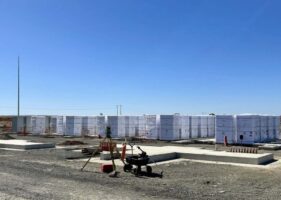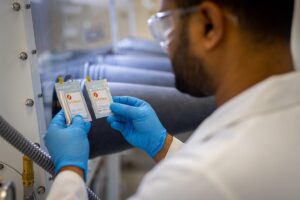Glenn Platt, a world-recognised former clean energy program leader at the CSIRO, remembers coming across two low-income housing tenants throwing a power cord over the back fence to share some excess solar.
“OK, you can switch on now,” Platt remembers one neighbour saying to the other as he prepared to vacuum the floor. It was a way of solving a problem about the value of solar exports, and it is just one example of a whole heap of muddied market signals that are getting in the way of the switch to renewables.
Platt is now leading a team from Advitech that is going to study some of the barriers to the uptake of solar and storage, and renewables in general, and to ensure that the transition is equitable to all.
And the testing ground is going to be Alice Springs, a relatively small market that just happens to mimic many, if not all, the attributes of the National Electricity Market, with its collision of regulatory, network, retail and consumer interests. And it has a big rental and community housing population.
“When I was working at CSIRO there was a perception that solar and batteries would only be of benefit to rich people,” Platt says. What his task will be in the new study is find either technical or regulatory or other solutions to ensure that no one is left behind as the Northern Territory heads towards 50 per cent renewables.
“There are many people in our country who have been excluded from the renewable energy economy because of geographical or socio-economic circumstances,” Platt says.
“We think it’s vital that all people experience ‘energy security’ and the benefits that flow from that. Technologies like solar and batteries have the potential to offer so many advantages, and understanding how we can bring these benefits to more people is a matter of social equity and public health.
It could even mean setting up systems that don’t interact with the grid at all, formalising – and improving – the sort of arrangements that he found with the neighbours with the vacuum cleaner and the excess solar.
Lyndon Frearson is the head of the $12.5 million Alice Springs Future Grid project that has commissioned the study and which is looking at finding ways for the regulators and utilities to work together in ways they had not imagined, or been able to do before.
“When we imagine the future grid of 2030, we often think in terms of numbers – will it be 50, 60, or 90 per cent renewables,” Frearson tells RenewEconomy.
“What we say is that whatever that number will be, it’s going to require a different set of operational relationships.”
Some regulatory set-ups, he notes, appear to discourage different parties from working together and in some cases effectively prohibit solar and storage from being installed.
“We know that has got to change. So we are putting trials together that looks at the structure of the future grid, and how the organisations will work together.”
Frearson says Alice Springs is a good place to find out what this looks like. It is a small grid, with high and rapidly growing levels of renewables and stability issues. It has a similar regulatory structure to the NEM, and it has an extremely high level of rental properties and low income housing.
One of the key issues is to provide incentives for owners of rental properties to install solar that can pass on the benefits to tenants. Another is solving the difficulties around community housing, and the confusion of ownership and tenancy arrangements.
“It often means that access to the renewable energy economy is not equitable,” a Future Grid statement says.
“People in lower socio-economic populations can be excluded due to tenancy arrangements, billing arrangements or the cost of setting up household renewable energy systems; or because renters typically have no control over the home’s energy sources.”










